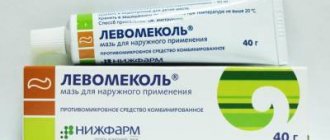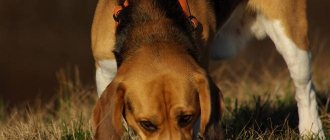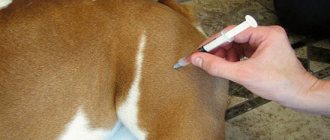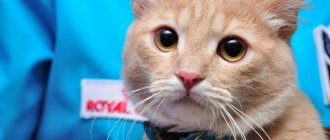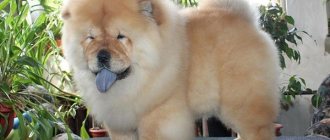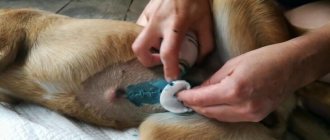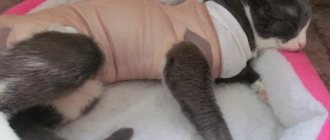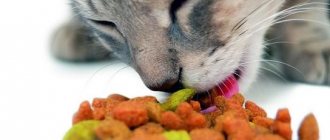- Caring for your dog on the first day after surgery
- Condition of the dog after sterilization
- Feeding is an important part of dog rehabilitation
- Postoperative suture: processing basics and precautions
Sterilizing a dog is a surgical procedure under general anesthesia, which is a serious test for the animal’s body. Therefore, even if the dog sterilization operation goes well and the pet tolerates it well, he definitely needs careful post-operative care and special attention from the owner, which will help him recover faster and return to his normal lifestyle. After sterilization, a dog must be constantly under human supervision, eat properly and go through all stages of rehabilitation recommended by a veterinarian.
Caring for your dog on the first day after surgery
How recovery will proceed after sterilization of a dog largely depends on the quality of care in the first days after surgery. It is important to remember that under the influence of anesthesia, all functions of the animal’s body slow down, and the overall body temperature also decreases, so the dog in the postoperative period needs additional warming and careful transportation, followed by providing a comfortable place to lie. After sterilization, the pet should be protected from drafts. You should not place the dog on a heating pad or near a radiator (risk of internal bleeding); it is better for the animal to sleep on the floor or mattress on a warm bedding in a quiet room.
When the anesthesia wears off, the animal does not immediately come to its senses, so the dog’s behavior after sterilization may differ sharply from its usual one.
Pets often become aggressive, not understanding where they are and what happened to them, restless, try to rip off the bandage over the wound, look strangely, try to stand on their paws and run somewhere. This kind of behavior should not be tolerated. You should calm the animal, caress it, stroke it so that it feels protected.
Price issue
Many people wonder how much castration costs; this procedure is not free and its price depends on some factors. Depends on the clinic, materials, postoperative period. On average, the price of such an operation is from 2500 to 6000 rubles. Remember that saving on your dog's health is not worth it.
When thinking about castration of dogs, weighing the pros and cons, everything must be taken into account on an individual basis. Think about your dog's personality. Then you will understand whether your pet should be neutered or not. You can consult a veterinarian or dog handler. If there are serious indications, then it is better to have surgery. Why torture an animal? Castration is not a panacea for all diseases, but it is not a mockery of a dog either. The amount of data from veterinary clinics shows that there is nothing scary or inhumane in this procedure. This is a procedure that will prolong your pet's life by reducing the risk of many diseases. However, each owner chooses for himself, based on the individual characteristics of the animal.
Condition of the dog after sterilization
- assessment of respiratory function, respiratory rate, intermittency, presence of wheezing;
- monitoring the functioning of the cardiovascular system, early diagnosis of heart rhythm disturbances, convulsions, heart failure;
- measuring body temperature and comparing the obtained values with the norm.
Naturally, the dog owner is not able to professionally assess the condition of the dog’s vital organs and systems, but he can determine the development of postoperative complications or the deterioration of the animal’s condition. Any changes in the dog’s health and behavior in the postoperative period are a reason to consult a veterinarian.
Principles of dog diet after castration
The main dietary treatment for dogs and bitches after spaying and neutering should be to provide an amount of energy that meets the requirement, but does not activate storage mechanisms for reserve ingredients. Thus, body weight should be monitored and considered central to the prevention of obesity - especially in those breeds that are genetically predisposed to obesity.
There are no ingredients in the diet that are a direct cause of overweight or obesity - only too much of them can lead to such diseases. Each of the nutrients is essential for the proper functioning of the body; a diet devoid of any of them is a deficient diet.
Undoubtedly, the appearance of overweight and obesity contributes to excessive participation in the diet of fats and carbohydrates.
There are many low-calorie diets available on the market, both for losing weight in animals and maintaining their weight after losing weight, so you can always choose the right food for your animal's needs.
Commercial diets for weight loss provide the required amount of all nutrients, but with reduced energy value. Therefore, you should give weight-loss foods no less than your regular daily food, because reducing the dose of such food may cause deficiency of some nutrients (such as proteins).
Important
The earlier castration, the greater the likelihood of its positive effect on the dog's health - it is believed that the procedure performed after the fourth fluid does not protect, but only reduces the risk of developing cancer or ropomacosis. Studies have shown that spaying before first fluid reduces the risk of mammary cancer in female dogs by as much as 95%.
Feeding is an important part of dog rehabilitation
Caring for a dog after sterilization includes following a special diet for one week from the moment of castration. You should not try to feed it immediately after the animal comes to its senses. After anesthesia, a dog’s digestive tract recovers a little later, so the first meal after surgery should be postponed until one day, when the dog can hold his head up and walk without staggering.
The day after sterilization, veterinarians usually allow you to start feeding the animal soft food in small quantities. Wet pet food is recommended. It is important to remember that from the moment of castration the pet’s hormonal background changes dramatically, so its owner should take care to reduce the pet’s usual portions of food, which will prevent the development of obesity. It happens that a dog does not eat after sterilization . In such cases, you should immediately notify your veterinarian and follow all his instructions.
Feeding and watering your pet
After castration, a domestic dog may experience swallowing problems. In such a situation, you should not force feed the dog or try to pour water into it. Fasting for several days during illness is a natural state for animals, but getting water or a piece of food into the bronchi and lungs will inevitably cause pneumonia. A dog weakened by castration may even die.
Constipation is a natural condition in the early days, so the food should be light, soft or semi-liquid so that the dog can easily digest it. There should be plenty of water if the dog is already drinking. If he still has problems with feeding, he needs to be fed, periodically giving a small amount of water and making sure that he swallows everything.
If constipation persists, you can give your dog a vet-approved laxative or mineral oil. If the remedies do not work after a few days, you need to call a veterinarian.
Postoperative suture: processing basics and precautions
The dog's suture after sterilization deserves special attention from the owner , since this place is most susceptible to infection, hurts and brings considerable discomfort to the animal. To prevent the development of inflammatory postoperative complications in the wound, veterinarians tend to prescribe antibacterial drugs to dogs, which should be given to the pet for 7-10 days after surgery. Along with antibiotics, the animal is advised to take drugs with an analgesic effect, the selection and dosage of which should be handled by a specialist, taking into account the severity of the pain syndrome and the characteristics of the dog’s body.
Correct treatment of the seam is an important step on the dog’s path to recovery. Its volumes and methods of implementation depend on the characteristics of the suture material that was used during the operation. In most cases, the postoperative suture requires daily treatment with antiseptics until the wound is completely healed and swelling and redness disappear. An additional means of protecting the seam is a special blanket, which is put on the dog at the end of the operation. It serves both as a reliable protection against bacteria and as a bandage. The blanket also needs to be changed every day to prevent infection in the wound. Dogs that show increased interest in their stitches, try to remove the blanket or bite the stitches, are put on an Elizabethan collar.
In order for a dog’s suture to heal normally after sterilization and not rip apart prematurely, the following conditions must be met:
- limit your pet from active games on the street and at home, physical activity, and walking in the stairwell;
- in rainy weather, walk the dog exclusively in overalls;
- refuse to bathe the animal in the first three weeks after sterilization;
- prevent constipation.
Before the sutures are removed, 10 to 14 days should pass after the operation. This is the time necessary for complete healing of the wound and sufficient regeneration of skin tissue at the site of the incision. The removal of sutures should be carried out by a veterinarian in a specialized office, so you should not try to get rid of them yourself, as such actions can cause irreparable harm to the health of the animal.
Danger signs
Many owners are interested in whether it is possible to sterilize a bitch after mating. It is not advisable to do this, but if there is no choice, for example, due to vital signs, then an experienced surgeon will perform the operation.
Sometimes owners are worried because after sterilization the dog’s milk appears, the mammary glands become enlarged, or discharge appears as if in estrus. This is due to the fact that there are still sex hormones in the bitch’s body.
It is much more dangerous if swelling and a lump appear on the seam. It could be a hernia. To prevent this from happening, you need a blanket and limiting the dog’s excessive mobility.
It is even more difficult if part of the seam does not heal and a fistula forms. In such a situation, an urgent visit to a veterinary clinic is necessary.
All owners are frightened if the dog behaves differently than before: it has become aggressive, is afraid of everyone, is nervous, hides in a corner. This may be a manifestation of a difficult recovery from anesthesia and should go away on its own. Owners will need to show patience and kindness to their pet.
Scrotal swelling
If there are no medical indications, then the scrotum is not removed during castration of a male dog. Immediately after surgery, this leather pouch remains empty. Doctors may briefly apply a heating pad with ice to the scrotum to cause the blood vessels to constrict.
Don't worry about the aesthetic side of the issue - in a few months the skin will magically tighten. There will be a smooth place where the testicles were.
We recommend reading: Otitis - diagnosis and treatment
Bulldog after castration
True, this takes time. But the body does not tolerate any emptiness and strives to fill it. Therefore, lymph can accumulate in the scrotum. On the third or fourth day, it looks as if the testes have returned to their place! This is fine.
Sometimes the swelling can be too strong and painful. This happens in several cases:
- Blood clots had accumulated in the scrotum because a vessel was damaged and not ligated.
- The wound became infected and inflammation began.
- Rejection of the suture material occurs (the latter situation is extremely rare; usually the problem is a violation of sterility).
In which case should you see a veterinary surgeon as soon as possible:
- the scrotum is purple or bluish in color;
- the swelling is so strong that the scrotum is larger in size than before the operation, the skin is stretched;
- discomfort when walking in a dog, signs of pain.
The doctor may prescribe novocaine blockades with an antibiotic or systemic antibiotics; sometimes surgical revision of the wound is required (under local anesthesia).
This Labsky (Labrador and Husky mix) was neutered at 7 months.
Coming out of anesthesia: what to pay attention to
You will have to write a separate article about the types of anesthesia. Therefore, there are no uniform recommendations. After gas (inhalation) anesthesia, the dog will be given to you almost fully conscious. If intravenous anesthesia (propofol) was used, then the animal also comes to its senses within half an hour.
Intramuscular anesthesia is another matter. If you do not use a special drug that brings the dog out of anesthesia (Antisedan, Antimedin, Alzan), then the animal will be “drunk” for a long time. It is precisely such an unconscious patient that needs constant supervision.
We recommend reading: ASF outbreaks detected in the Nizhny Novgorod region, the Jewish Autonomous Region and the Primorsky Territory
Labrador recovers from anesthesia
Do not try to immediately pick up your pet. If the dog is still sleeping, it is much safer to lay it on a flat surface, on its side. Doctors pull the tongue out of the mouth, hanging to one side. It can be moistened with a wet hand to prevent it from drying out. When waking up, vomiting may begin, although with a proper fasting diet it almost never happens.
The dog should breathe evenly and deeply. Breathing should be monitored especially carefully in brachiocephalic breeds. In a bulldog or pug, a long velum palatine may block the entrance to the trachea. A half-asleep pet will quietly gasp, and only by the purple color of its tongue will the owner understand that it’s time to sound the alarm.
Waking up from anesthesia, the dog may behave absolutely inappropriately - not recognizing the owner, biting the hand that strokes his face. Some dogs begin to bark and whine, not because they are in pain, but because the nervous system is excited.
The dog will try to get up, fall, and kick its legs. It is very important to prevent injury. Do not place your pet on a slippery floor and encourage activity. The dog is calmed with a voice and sat down, not allowed to rush around. Decorative dogs are carefully picked up.
Large dogs are laid to sleep on the floor
If the clinic's capabilities allow, owners should not be left alone with a pet that has not fully recovered from anesthesia. He must be supervised by staff.
